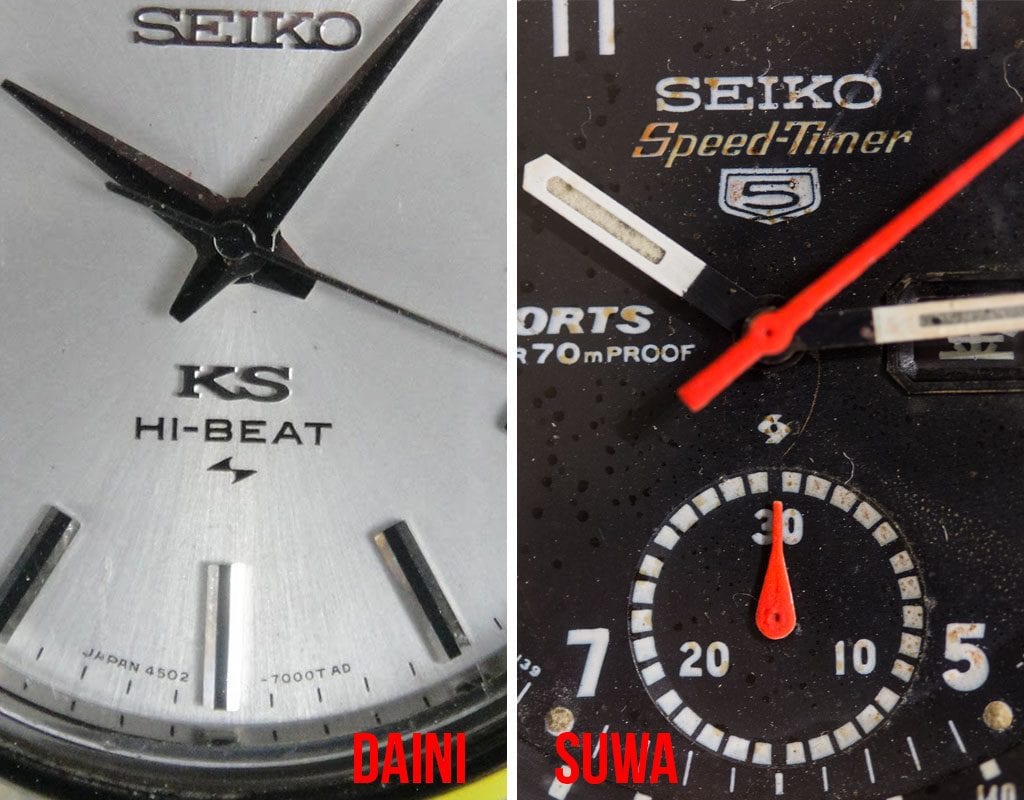Daini and Suwa: The Arms (Race) of Seiko

As Westernization swept over Japan—during the late 19th century into the 20th—the import and demand for traditionally European time tellers impacted Japanese industrialization. This is an important part of Seiko founder Kintaro Hattori’s story. His brand started out with fixing and selling Western imported clocks in 1881. After 9 years of success in Tokyo, K. Hattori opened his Seikosha (exquisite/successful business in English) factory. This factory became repurposed due to a war with Russia from 1904-1905, where the two empires clashed over Manchurian and Korean territory. Although making war materials for this conflict was far from horological, it gave K. Hattori insights into mass production. His new relationship with this style of manufacture laid the foundation for what would be one of the biggest watch brands in history.
From the Ashes
In 1923 a devastating earthquake hit Japan and destroyed most of Tokyo. Known as the Great Kantō earthquake, this natural disaster leveled the original Seikosha factory, kicked up multiple firestorms, and spawned a fire tornado in the heart of Tokyo. Astonishingly, just one month after this monstrous quake, K. Hattori was back to business. By 1924 his company K. Hattori & Co. introduced the brand Seiko—a fitting name for a brand that triumphed through one of the greatest earthquakes in human history. In that same year, the Seiko brand began introducing its first original pocket watches.
K. Hattori’s time pieces continued to gain notoriety for efficiency and quality manufacturing as
Seiko moved forward. From the mid-1920s until the late 1930s, K. Hattori diversified the manufacturing aspect of his business—which meant requiring a whole timepiece division of his brand. By 1937, three years after K. Hattori’s death, Seiko opened their Daini Seikosha division to focus on time-oriented endeavors (Daini meaning “second” in Japanese). Although things were highly successful for Seiko up until this point, war once again came into the picture—putting Seiko back into war-time production. For the sake of brevity, the Second Great War was not friendly to Seiko. By the end of WWII all Seiko factories were destroyed, except for one—their Suwa Seikosha factory.
Daini and Suwa Compete

During the time of the Cold War between America and Russia, Seiko had its own sort of arms race. Over the decade following Japan’s World War defeat, Seiko had rebuilt its Daini Seikosha factory. Having both Suwa and Daini as separate entities of the same brand would become a company-wide attempt to promote healthy competition in design. However, before the mid-1950s, Seiko had never established a dedicated design team for its timepieces—even though they were the highest sold timepieces in all of Japan. In terms of their business, the idea of having a watch “designer” had been a bit of a foreign concept. So taking up the mantle first Suwa Seiko began its own design department in 1956. Their design team mostly covered the dial—leaving the rest of the design work to the team building watch cases. Two years after Suwa started their design team, Daini Seiko began hiring college level design graduates to work on their productions. Thus came the battle for supremacy between two separate subsidiaries of Seiko, in the year 1959. It became a test of each division’s prowess to make the next best movement-innovation for the brand. To differentiate between the two arms of Seiko, each had their own original maker’s mark. Suwa Seiko used a whirlpool logo on their dials, while Daini used a two-triangle and lightning bolt logo. On top of this competition, K. Hattori & Co. hired designer Taro Tanaka to oversee Seiko designwork. His influence would be substantial for the brand from his time with Seiko and beyond.
The most notable competition between the two divisions of Seiko was the push and pull between the “Grand Seiko” from Suwa and the “King Seiko” from Daini. Originally kicking off with the 1960 release of the Grand Seiko, this competition saw many great innovations in movement design for the Seiko brand. The Grand and King square-off lasted well into the 1980s—flowing right through the quartz revolution, which put Japanese watchmakers front-and-center for consumer timepieces. With skillful design innovations both inside and outside of their watches, healthy competition between Daini and Suwa Seiko developed a truly powerful reputation for the Seiko brand—which persists to this very day.
Seiko Rolls On
Ultimately, Suwa won out regarding the most popular Seiko styles. Their designs are still leaned upon the most—in terms of today’s sales. However, many Daini watches have made it to market and are favorite pieces to a sizable group of watch collectors. The differentiation between these two divisions of Seiko can add or decrease the relative monetary value of one of their watches, but not by much. So whether one has a “King” or “Grand” Seiko, or any other Seiko for that matter, they’ll have a solidly comparable watch from one of Seiko’s two great arms. Each of these limbs has grown from the trunk of a rich history, been nourished with horological ingenuity, and taken root in the labors of founder Kintaro Hattori.
Times Ticking has been in operation for more than 30 years, since 1982. We have performed watch repair for customers both locally and internationally. If it Ticks! We KNOW it! Our team of watch repair technicians have a combined experience in watchmaking of over 120 years.

